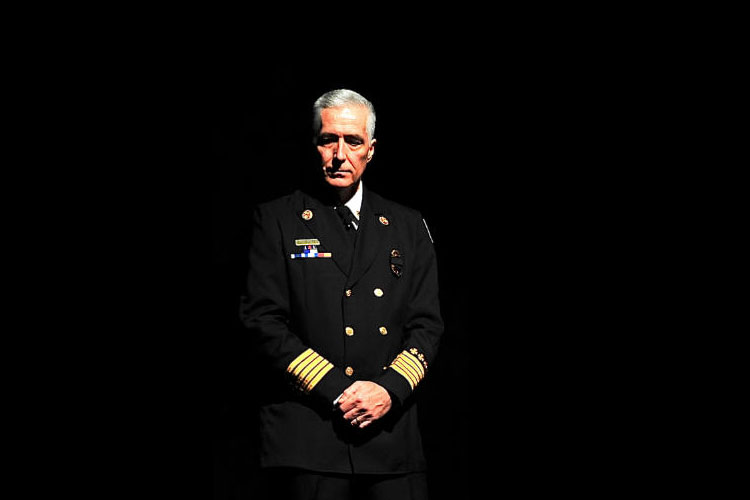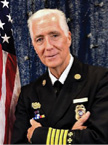

The first due in on a working fire in our American fire system has a set of responsibilities that vary locally given a wide variety of factors. Consistent among these expectations is that the first-arriving company officer or fire department member should provide his assessment of what the situation is as he sees it on arrival. This can be very different from the information provided by dispatch, or it can be a confirmation of that dispatched information. Confirming or providing a revision of the initial description is important in making sure our mental picture of what we are responding to matches what we are facing. Our emotional and physical responses are very much affected by what we anticipate we are facing, and achieving a verified understanding of the risks allows us greater control over these responses.
The size-up or on-scene initial reports fulfill one of the most widely understood of all basic human needs—that is, reducing anxiety or uncertainty, as the early Muslim philosopher Ibn Hazm (944-1064) shared with us long ago. This wisdom has not changed. The initial report is followed up generally by a subsequent 360 report, which then adds to or enhances the initial description of conditions and understanding. We know that fires and other emergencies are dynamic events; they are changing, sometimes quickly. These changes can either increase risk and anxiety or decrease risk and anxiety.
Companies dispatched for a mattress fire on arrival may find a structure fire with a heavy room-and-contents fire and subsequent associated issues, or they may find a mattress smoldering on the side of the road. The wide number of variables and issues that we contend with on every call makes silver bullets, one size fits all, and the quest for the perfect standard response—one that is always going to be a moving target. Communication and shared understanding are the key elements to making the event unfold gracefully. Their absence increases risk, increases anxiety, and reduces readiness for necessary action.
A metro company may need to stand down, a parade of companies doing a routine practiced, albeit high-risk NASCAR response in heavy traffic when met with a mattress smoldering in an alley. A lightly staffed rural company may need to express clearly the need for rapid assistance from a wide variety of highly dispersed resources with all possible speed when arriving at a well-involved contents fire in a structure. Both cases require descriptive communication from a member who is fluent in our local descriptive language to connect us to the event, providing us with a shared understanding.
The ability to communicate and be understood in both those situations is something most firefighters work on developing rather early on in their careers. We are taught early on to take in as much as we can, look for critical fireground factors, and express these observations in a locally standard way as descriptively as possible. The reason we practice this so frequently and diligently is intuitively understood by experienced firefighters, and this imperative is shared constantly with junior members as they progress through the system.
The first arriving, after confirming arrival and initial observations as completely and descriptively as possible, then generally have a set of activities to accomplish in a more or less routine way to allow them to put actions together to address whatever it is they have responded to, whether an isolated mattress fire in an alley or a working fire in a structure. Those first actions will always involve placing their apparatus.
We understand the need today for distance and hopefully wind direction to assist us in avoiding breathing smoke at any time. We are also very mindful about our subsequent arriving apparatus such as our ladder companies, which will need priority access at fires where their unique capabilities are required. Engine companies should always attempt to spot on a plug when possible and pump to the fire rather than assuming a position in front of the fire, thereby creating noise, exposing members to unnecessary hazards, and removing the forward position for ladder and truck companies.
After accomplishing this and without a dynamic—i.e., high-risk, pressing need for direct involvement—the first arriving will then provide the secondary report following the 360 of the event. At the alley mattress fire, it may not be necessary unless an unusual thing happens or is found, but at a structure fire or most other emergency events, it is anticipated and continues the communication and understanding of the event.
If there is fire or another possible inhalation risk, the 360 should be done on breathing air and from as safe a distance as possible from the structure to avoid any exposure to collapse or explosion. The use of air monitoring equipment and thermal imaging equipment helps provide much-need information, which, when shared among the responders, verifies our shared subjective understanding of what we are facing.
There is a need for detail and descriptive language in our initial and subsequent size-ups. It is also important to encourage other units on scene to add to those descriptions should they see something or discover something that was not included in the initial size-up. We have learned much from cognitive neuroscientists who have shared with us the lessons of the “invisible gorilla,” and so we must constantly be on our guard and question the completeness of our perception. One of the best ways to ensure a complete picture is to include more painters on the canvas, more fingers on the knife; and more information—especially that which helps avoid high-risk dangers—should be shared when discovered.
Sharing that verification of the risks and threats and our current understanding of them makes us more ready, less uncertain, and better equipped to engage.

MORE BOBBY HALTON

